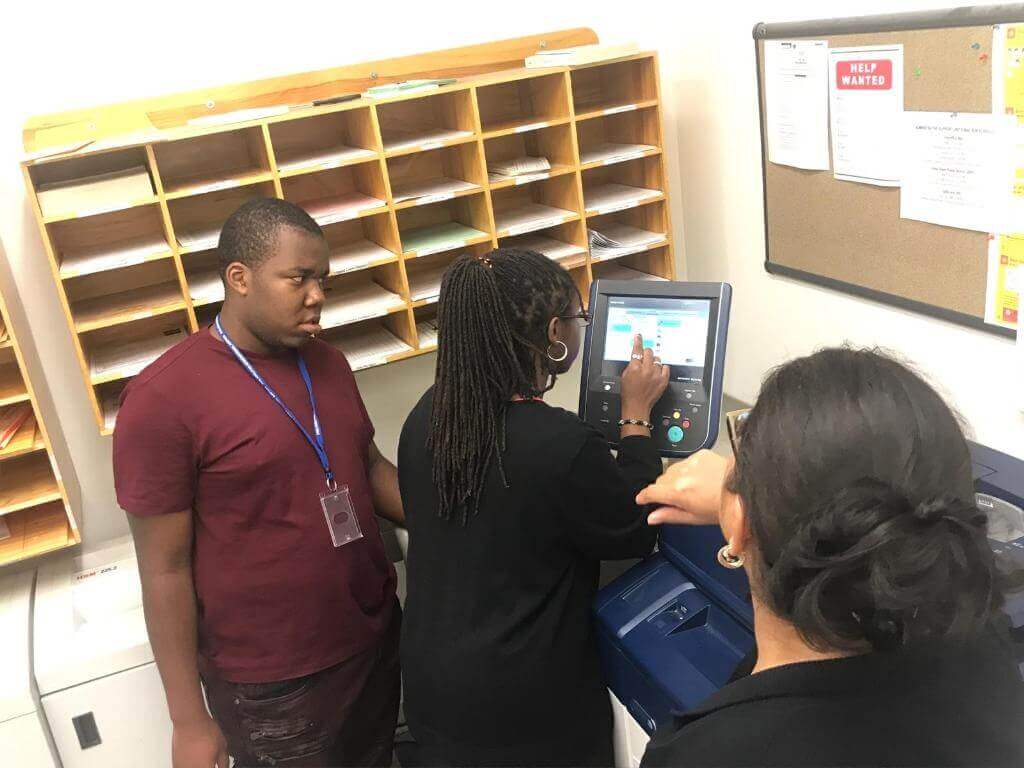How is Digitability Teaching Workplace Behavior Skills?

Workplace Behavior Starts in The Classroom
Written by Courtney DeYoung, Registered Behavior Technician and Applied Behavior Analyst at Manhattan Children’s Center.
Social Skills
When it comes to social interactions sometimes I feel on top of the world like a “social butterfly,” but other times I replay every single interaction I have had that week in my head to decide if it was “weird” or if I did in fact, miss a social cue to stop talking! Our students are no different! Social Skills are a critical part of our development and sometimes we have to be reminded what is and is not appropriate in any given situation. Although we are not all taught the importance of appropriate social interactions, we must encourage our students to step out of their comfort zone and explore different areas in which they can socially interact with one another and eventually in new settings with new people.
Get Your FREE Quote Today!
Social skills is a very broad concept with many subcategories. There are social skills in the workplace, social skills in the classroom, social skills in the community as well as countless scenarios in which we must act “socially appropriate.” Social skills in the workplace are skills we all must learn to be successful in any work environment. When I have been interviewed for jobs, I am asked questions regarding adaptability, motivation, and problem-solving. Although many of these concepts are learned with experience, we can also teach them in a naturalistic way to our students that have a difficult time socializing.
Why use Naturalistic Teaching?
Naturalistic teaching is when we utilize the student's current interests, knowledge, and activities to incorporate learning opportunities and guide instruction. When we teach our students in a naturalistic way, we are able to then generalize those skills amongst peers, staff members, and environments. Digitiabilty taps into naturalistic teaching throughout their Social Economy system, which delivers workplace behavior instruction using the best evidence-based practices.
How can we cultivate successful Workplace Behavior?
In Digitability’s Social Economy, there are four levels systematically designed to increase capacity in workplace socialization and communication. The first level, Workplace Culture, teachers focus on increasing motivation, the ability to attend to a task, as well as giving and interpreting feedback. As the Social Economy also has a financial literacy component, this level also focuses on earning and spending. The second level, Workplace Boundaries, encompasses personal budgeting (paying bills, bank statements, paystubs, and more), executive functions, and self-regulation. The third level works on navigating common workplace policies which include performance evaluations, empowerment, and self-efficacy. The last level, Workplace Advocacy, which breaks down long-term planning, and a path for creating a self-advocacy plan for future employment.

By guiding the students through a comprehensive lesson regarding workplace behavior, and then providing Workplace Simulations to practice flexing these skills, we are allowing them to grow in a way that allows them to make mistakes but most importantly, learn from those mistakes.
Keeping the Big Picture in Mind!
As any teacher can agree, the main goal for our students is for them to retain the information and be able to independently apply it throughout life. As any new employee navigates a new work environment, there is typically a supervisor or manager who is willing to help you adjust to the new environment, similar to the classroom where we prompt our students when they aren’t sure of the correct answer. However, eventually, an employee will be expected to complete tasks independently, problem solve and ask for feedback.
Generalizing workplace social skills can be tricky for our students, but Digitability helps provide a framework for teaching workplace behavior where teachers’ use prompting when needed, but also have guidance on how to take a step back and let the students work independently to communicate, problem solve and interpret each other’s feedback, just as they might in a workplace. Throughout each of the Digitiability lesson plans, differentiated materials are available to meet each student at their current level, and provide the necessary guidance. At the same time, teachers have the tools to address a variety of IEP goals to ensure students are making progress toward their transition to independence.
With social skills, it is crucial for teachers to remember that sometimes conversations and experiences don’t always go our way. Sometimes they are a little uncomfortable or hard to do, but with experience we can overcome even the most awkward of them all. When we explicitly teach our students the skills to cope with an uncomfortable or hard encounter, we are teaching them skills that will allow a realistic transition into the workforce and how to persevere in the future, when they no longer have the support of the classroom. If we encourage peer feedback, we are teaching them to accept feedback from coworkers or community members in which they will interact with. Lastly, if we promote a healthy environment within the classroom, we can encourage our students’ to self-advocate which is such a valuable attribute for students as they transition to the next phase of their life. With Digitability we are promoting independence, acceptance and equality within the professional world. Digitability is the bridge from a student's education to fulfilling work post-transition.
About Digitability
You may also be interested in...

